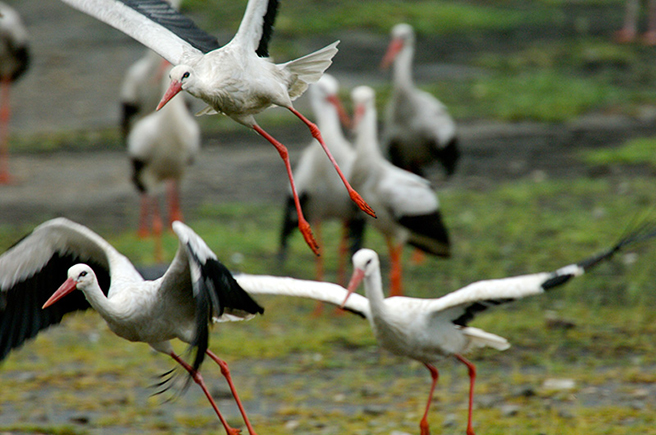Africa’s Summer Bird: The White Stork

Birds of a feather will flock together, especially when they are trying to escape the cold, winters of Western and Central Europe.
But, did you know how far they travel to escape?
With bird ranges dwindling, however—thanks to encroachment from farms and urban development—many migratory bird species are quickly losing their winter territories, including those used by the white stork.
While many know it as the European stork due to its breeding range, the white stork is a long-distance migratory bird that is lucky enough to winter yearly in sub-Saharan Africa, avoiding those bitter European winters.
The average journey south takes 49 days and almost 20,000 km. This stork species sets out from Europe and moves over the Strait of Gibraltar into the Sahara desert, following the heavy thermal systems that allow it to efficiently soar to its destination (and even conserve energy in the process!). These flocks, some with almost 11,000 individuals, then follow the Nile River south to eventually settle in various African countries, including Kenya, Sudan, and South Africa.
Large meadows and marshlands with sufficient trees for nesting are the ideal habitat for white storks, but the occasional roof, steeple, or tower will do just fine for these opportunistic birds.
White storks make their large nests from sticks, mud, and sod, and they have even been observed using rags and other human detritus as additional insulation for their four-egg clutches.
Many of these nests have been known to last centuries and are used by multiple breeding pairs and other bird species—a testament to the white stork’s building prowess.
In terms of diet, the stork isn’t picky. It will eat anything small enough to fit in its large, dagger-like beak, which it uses to spear prey with lightening-fast precision. Those animals unfortunate enough to be caught on the receiving end of a white stork bill include frogs, lizards, fish, insects, crustaceans, and, on occasion, even small mammals like rabbits and mice.
Though development in Africa has in some cases cut into white stork habitat, AWF’s efforts to conserve large swaths of land for elephants and lions have also benefited the massive stork flocks that come to roost during Africa’s summer.
With continued efforts on the part of AWF and other conservation groups, white storks stand to continue their massive yearly migration and thereby avoid their other career choice: delivering babies to expectant parents.